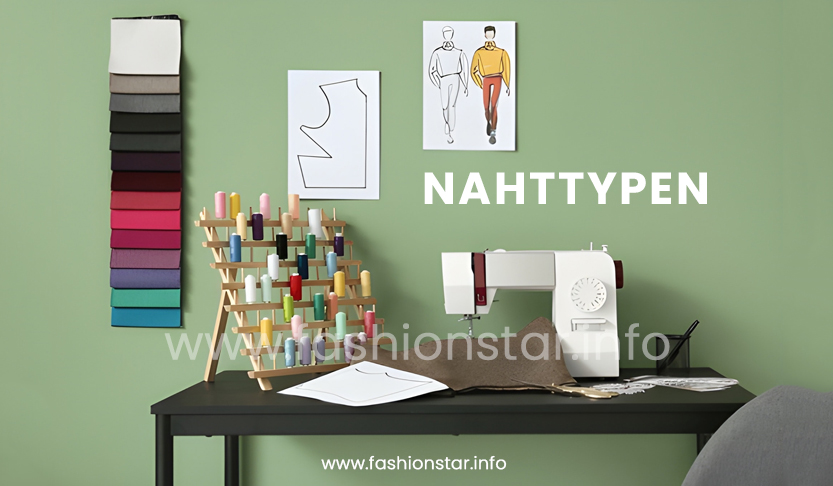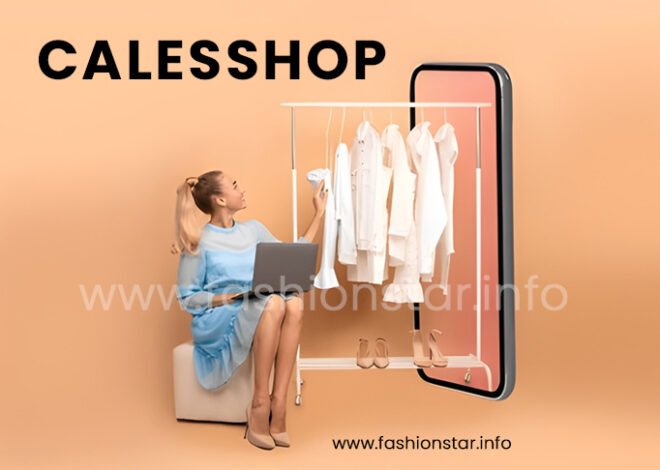
Nahttypen in Fashion: How Seam Types Define Fit, Style, and Durability
In the simplest terms, nahttypen refer to the various types of seams used to join fabrics together. A seam isn’t just a row of stitches—it’s the backbone of every textile creation. From high-fashion garments that glide down the runway to heavy-duty industrial upholstery that endures extreme conditions, nahttypen define how materials come together, function, and endure.
Whether in couture design or technical manufacturing, understanding nahttypen means mastering the delicate balance between aesthetics and performance. Each seam type serves a specific purpose: some provide strength and durability, while others enhance design with decorative flair. Seam types vary based on materials, fabric weights, and intended use—making them an essential part of both creative and functional design processes.
In this guide, readers will explore everything about nahttypen—their structure, types, uses, advantages, and applications in fashion, upholstery, and industrial engineering. Let’s dive deep into how seam selection can transform a project from ordinary to exceptional.
Understanding the Concept of Nahttypen
The Role of Seams in Design
Every garment or textile product relies on seams for structure. Seams connect multiple fabric panels into a cohesive whole, defining the shape, fit, and integrity of the final product. In both fashion and industry, seam selection determines not only how a piece looks but also how it performs under stress.
For instance, a dress might use fine French seams for elegance, while a tent or wetsuit might rely on welded seams for waterproofing. The versatility of nahttypen allows designers and engineers to achieve both beauty and resilience.
Why Nahttypen Matter
The importance of nahttypen lies in their dual role—functional and aesthetic. Functionally, they hold materials together and maintain structural integrity. Aesthetically, they influence the drape, silhouette, and even texture of the final product.
From the perspective of sustainability, good seam construction can also extend a product’s lifespan, reducing waste and promoting eco-conscious design. Seam engineering, therefore, is not just technical—it’s strategic.
Types of Nahttypen in Fashion Design
1. Core Seam Types
Core nahttypen are the foundation of garment construction. These seams appear in nearly every piece of clothing, ensuring both strength and stability. Common examples include:
2. Plain Seam
A plain seam is the most basic and widely used seam type. It joins two pieces of fabric with right sides together, then presses them open. While simple, it provides a clean, durable finish suitable for most woven fabrics.
Designers use plain seams for blouses, dresses, and trousers—where functionality meets simplicity.
3. French Seam
Elegant and refined, the French seam encloses raw fabric edges within the stitching, preventing fraying. It’s perfect for lightweight or sheer fabrics such as silk and chiffon. This seam type not only adds durability but also enhances the garment’s inner beauty, making it ideal for high-end fashion and delicate couture.
4. Flat-Felled Seam
The flat-felled seam is renowned for its strength. It encases raw edges and double-stitches them flat, creating a durable and neat finish. This technique is common in jeans, workwear, and uniforms—areas that demand both resilience and comfort.
5. Bound Seam
In a bound seam, a separate strip of fabric binds the raw edges. This seam type adds both durability and decorative appeal. Often used in unlined jackets and sportswear, it provides a professional, polished finish while preventing fraying.
Decorative and Specialty Nahttypen
Not all seams are meant to stay hidden. Decorative nahttypen elevate garments through creative detailing.
Topstitched Seam
Topstitching adds visual contrast and reinforces strength. Commonly seen in denim, outerwear, and accessories, topstitching uses thicker thread and longer stitches to highlight seam lines.
Piped Seam
A piped seam features a narrow cord covered with fabric inserted between two layers. It adds texture and dimension, frequently used in home décor and luxury fashion pieces.
Lapped Seam
A lapped seam overlaps two fabric pieces rather than joining them edge-to-edge. It’s often used for leather, vinyl, or coated fabrics—offering a clean, strong joint without excess bulk.
Decorative Binding and Bias Finish
Binding with contrasting bias tape or decorative trims transforms a simple seam into a standout design feature. It’s an artistic expression of craftsmanship and attention to detail—values that define quality fashion construction.
Nahttypen in Industrial and Technical Applications
When it comes to industrial and technical design, nahttypen (seam types) have evolved far beyond traditional stitching. While early seam construction relied solely on needles and threads, modern engineering has introduced a range of innovative methods that enhance durability, waterproofing, elasticity, and aesthetic precision.
From automotive interiors and upholstered furniture to high-performance outdoor gear, these advanced seam techniques ensure that products can withstand heavy use, environmental challenges, and the test of time. Understanding industrial seam innovations is therefore essential not only for manufacturers but also for designers striving to combine practicality with modern craftsmanship.
Industrial Seam Innovations
In industries such as automotive manufacturing, upholstery, aerospace, and outdoor equipment production, the role of seams has expanded significantly. Engineers no longer depend solely on conventional sewing machines—they now leverage ultrasonic, thermal, and adhesive technologies to bond materials efficiently and precisely. These innovations enhance product performance, safety, and user comfort.
Below are the most impactful industrial nahttypen that define modern technical design:
1. Welded Seams
A welded seam is created by fusing two layers of material using heat, ultrasonic waves, or high-frequency energy, completely eliminating the need for thread. This process melts the fabric surfaces together, forming a continuous, watertight bond.
Welded seams are particularly popular in waterproof and outdoor materials such as PVC, polyurethane-coated fabrics, polyester, and nylon. By avoiding needle holes, these seams prevent water penetration, making them perfect for products like tents, wetsuits, industrial tarpaulins, and medical equipment covers.
In addition to their waterproof quality, welded seams offer a sleek, uniform appearance—ideal for brands that value minimalism and technical precision.
2. Heat-Sealed Seams
Heat-sealed seams represent another major leap in industrial sewing innovation. Instead of using threads or traditional stitching, this method relies on temperature-controlled heat bonding. The edges of synthetic materials are gently melted and fused together under pressure, forming an airtight and watertight seal.
This process is essential for products exposed to moisture, air pressure, or outdoor conditions, such as inflatable boats, raincoats, waterproof jackets, protective tents, and industrial covers.
The biggest advantage of heat-sealed seams lies in their ability to maintain flexibility while resisting leaks or wear. They combine structural strength with a smooth, lightweight finish—qualities that make them indispensable in both consumer and industrial product manufacturing.
3. Taped Seams
A taped seam involves the application of a specialized waterproof tape over stitched areas to cover potential gaps. The tape—often heat-applied—acts as a sealant, preventing water from seeping through the stitch holes.
This seam type is widely used in technical apparel, such as ski jackets, hiking gear, performance outerwear, and camping equipment. It allows designers to retain the flexibility and breathability of stitched fabrics while adding a strong layer of protection against rain, snow, and wind.
Taped seams strike the perfect balance between functionality and comfort, ensuring that garments perform flawlessly even in extreme weather conditions.
4. Glued or Bonded Seams
In bonded seams, instead of thread or heat, adhesives are used to join fabrics together. Modern bonding adhesives form a smooth, flexible connection that reduces bulk and increases comfort.
This technique is highly favored in sportswear, lingerie, activewear, and technical fashion because it eliminates visible stitching lines and chafing, providing a cleaner, more futuristic look.
Bonded seams are also advantageous in manufacturing because they speed up production, reduce material waste, and enhance product longevity. Their sleek, modern finish perfectly aligns with the current shift toward minimalist, high-performance garment design.
Nahttypen for Upholstery and Automotive Design
In upholstery and automotive industries, seam quality directly affects strength, appearance, and user comfort. Seats, cushions, and panels are constantly exposed to pressure, movement, and friction, which means only the strongest, most resilient seams can deliver lasting performance.
Precision plays a crucial role here. A single weak stitch could cause tearing, fabric separation, or uneven tension. That’s why reinforced nahttypen are used to ensure not only functionality but also elegance and durability in products like car interiors, office chairs, furniture, and marine upholstery.
Let’s explore the most common and reliable seam types used in these technical fields.
Double-Needle Seam
The double-needle seam—also known as a twin-stitch seam—is created using two parallel rows of stitching. This structure distributes tension evenly, reinforcing the join and preventing separation even under continuous stress.
It’s a preferred choice in automotive seating, leather furniture, and heavy-duty upholstery, where both strength and symmetry are essential. Beyond functionality, double-needle seams also add a polished, premium look that enhances the overall aesthetic of the product.
Overlocked Seam
The overlocked seam is a staple in upholstery and fabric finishing. It’s created using a serger or overlock machine, which simultaneously trims the fabric edge, encloses it in thread, and sews it in one smooth motion.
This seam prevents fraying, maintains fabric stability, and ensures clean edges even after years of use. Because it’s efficient and neat, it’s widely used in home furniture, automotive interiors, and industrial textiles.
Overlocked seams are particularly useful when working with synthetic or woven fabrics that tend to unravel easily—guaranteeing professional-quality finishes every time.
Chain Stitch Seam
A chain stitch seam gets its name from the interlocking loops of thread that resemble a chain. Unlike straight stitches, this seam allows greater flexibility and elasticity, making it ideal for fabrics that experience frequent movement or stretching.
Chain stitch seams are commonly found in automotive seat covers, boat upholstery, and flexible industrial materials, where constant motion requires both durability and adaptability.
Their unique structure enables repair and adjustment without unraveling the entire seam—making them a practical, long-lasting solution for many technical applications.
Selecting the Right Nahttypen for Your Project
Choosing the correct nahttypen can make or break a project. It’s not just about stitching two fabrics together—it’s about selecting the right seam for the fabric’s properties, intended use, and design purpose. Below are key factors to consider before committing to a seam type.
Factors to Consider
-
Fabric Weight and Texture:
Lightweight fabrics like chiffon or silk require delicate seams such as French seams, while thicker materials like denim or canvas need stronger constructions like flat-felled seams. -
Stretch and Flexibility:
Fabrics with stretch—such as Lycra or knitwear—work best with zigzag or overlocked seams, which allow movement without tearing the stitches. -
Purpose and Environment:
Outdoor gear and protective equipment require sealed or welded seams to block moisture, while everyday garments may prioritize comfort and aesthetics. -
Durability vs. Design:
High-performance industrial projects focus on strength, whereas fashion items often emphasize appearance and drape. Striking the right balance between these priorities is key to professional-quality results.
Seam Allowance and Construction Techniques
A seam allowance is the extra fabric between the stitching line and the edge of the fabric—small but essential. It determines how secure and polished your final result will be.
Beginners often overlook the impact of seam allowance, but even a few millimeters can alter the fit, tension, or shape of a garment or product. Professionals recommend testing different seam widths and tension settings on scrap fabric before final construction.
Attention to detail in these early stages ensures that the final piece not only fits perfectly but also withstands wear and stress over time.
Maintenance and Longevity of Nahttypen
Proper care and maintenance are vital to extend the life of any seam, whether in clothing, furniture, or technical gear. Even the strongest seam can weaken if it’s not maintained correctly.
Proper Care Practices
-
Gentle Washing:
Use mild detergents and gentle washing cycles to avoid damaging threads. Overly harsh chemicals or high temperatures can weaken fibers and seams. -
Fabric-Specific Care:
Follow the manufacturer’s cleaning recommendations—synthetic materials and bonded seams often require low-heat drying or air-drying to maintain their integrity. -
Inspection and Maintenance:
For industrial or outdoor products, regular inspections help identify early signs of wear or stress before major failures occur. Reinforcing weak seams early can save costly repairs later.
Repair and Reinforcement
When a seam begins to loosen or fray, addressing it early prevents further damage.
For fabric seams, restitching or reinforcing can restore strength. For bonded or heat-sealed seams, resealing with heat or adhesive helps maintain water resistance and durability. Proper repair techniques not only extend lifespan but also keep the product’s aesthetic quality intact.
Common Mistakes in Seam Selection and How to Avoid Them
Even experienced designers occasionally make errors in seam selection. Here are some frequent mistakes and how to avoid them.
Choosing the Wrong Seam Type
Selecting a seam without considering the fabric’s properties or usage can lead to failure. Using a decorative seam on stretchy materials or a light seam on heavy denim may cause puckering, tearing, or early wear.
Always evaluate the material weight, tension, and expected movement before deciding which nahttypen to use.
Neglecting Fabric Grain
Ignoring the grain direction of the fabric can distort seams and affect the overall fit. Proper grain alignment ensures the garment or upholstery maintains its intended structure and drape.
Overlooking Seam Finishing
Leaving seams unfinished can result in fraying or unraveling. Techniques like overlocking, bias binding, or taping not only enhance durability but also give a professional, polished appearance.
The Aesthetic and Functional Balance
The art of nahttypen lies in balancing functionality with visual appeal. A seam is not just a line that holds two fabrics together—it defines how a garment behaves, feels, and looks. On a functional level, seams provide structure, strength, and flexibility, allowing the fabric to move naturally without tearing or losing shape. A well-made seam determines the overall durability of clothing or technical gear, ensuring that each stitch contributes to long-lasting performance.
Beyond strength, seams also play a key role in design and aesthetics. The right seam type can emphasize body contours, refine silhouettes, or add stylish details that elevate the final look. Decorative stitching, visible topstitches, or contrasting threads often turn simple seams into design highlights. In high-end fashion, the placement and finish of seams can even become a signature element that sets one designer apart from another.
Masterful designers and technicians understand that the true beauty of nahttypen comes from the harmony between structure and style. A French seam may offer elegance for delicate fabrics like silk, while a flat-felled seam provides durability for denim and workwear. This thoughtful choice transforms seams from invisible supports into purposeful, aesthetic components that enhance both comfort and appearance.
In industrial applications—like automotive design, upholstery, or outdoor gear—the balance shifts toward durability and efficiency. Yet even there, the precision and neatness of a seam reflect craftsmanship and quality. Whether the goal is elegance in fashion or endurance in engineering, the right nahttypen unite functionality and artistry, proving that every seam tells a story of skill, design, and purpose.
The Future of Nahttypen
As technology and sustainability evolve, seam construction continues to transform. Modern innovations are reshaping how fabrics are joined, how products perform, and how industries minimize waste.
Smart Seam Technologies
Recent developments in smart textiles integrate sensors, microchips, and conductive threads directly into seams. These seams can measure temperature, motion, and stress levels, offering valuable data for sportswear, healthcare, and automotive safety.
This fusion of technology and textile science opens new doors to functional design—turning simple seams into intelligent, responsive components.
Sustainable Seam Construction
Sustainability has become a core principle in design, leading to eco-friendly advancements in nahttypen.
Water-based adhesives, biodegradable threads, and minimal-waste sewing techniques are replacing conventional methods. These approaches not only reduce the environmental footprint but also maintain the high quality and resilience of the final product.
Automation and AI in Seam Engineering
Automation and AI-driven seam engineering are revolutionizing the production landscape. Advanced machines can now determine the most efficient stitch patterns, tension adjustments, and material compatibility—ensuring consistent precision and minimizing waste.
This blend of human creativity and digital precision marks the next era in seam innovation, where performance, efficiency, and sustainability coexist seamlessly.
Conclusion
At its core, nahttypen represent more than just the connection between two pieces of fabric—they embody the craftsmanship, innovation, and artistry behind every textile creation. From delicate French seams in couture gowns to welded seams in industrial gear, each type serves a purpose that bridges function and form. Understanding these seam variations allows designers, engineers, and manufacturers to make smarter choices—ensuring strength, comfort, and aesthetic excellence in every stitch.
As technology advances, seams are no longer limited to thread and needle. Smart textiles, eco-friendly adhesives, and automated precision tools are redefining how materials interact and perform. These innovations highlight how seam construction continues to evolve, blending sustainability with technical progress.
Ultimately, nahttypen stand as the unsung heroes of both fashion and industry. They determine how garments move, how upholstery endures, and how high-performance equipment withstands the elements. Whether for elegance or endurance, seams remain the invisible foundation that shapes every creation—proving that true quality lies not just in what you see, but in how it’s held together.
Be the first to know! Stay tuned for fresh updates and timely notifications. Fashion Star!



